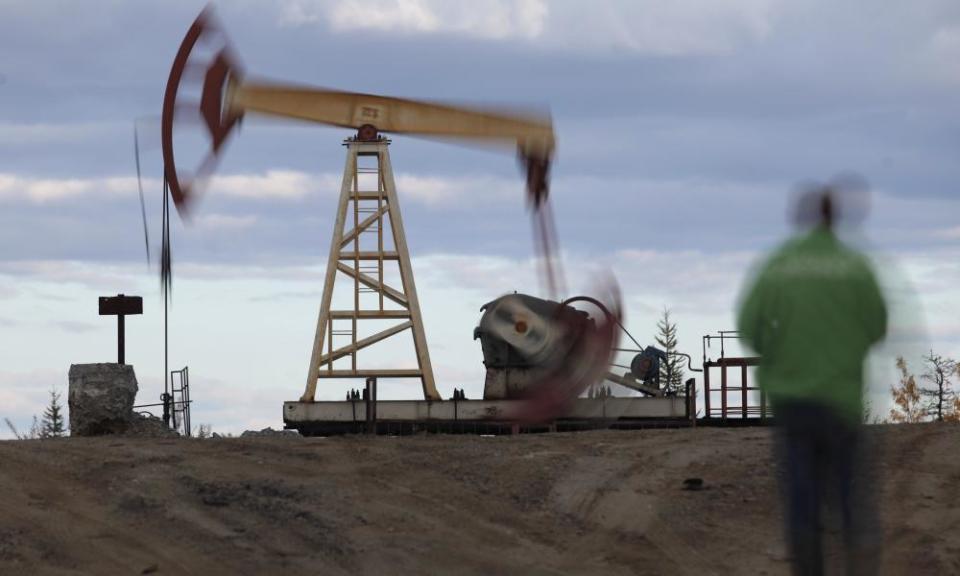Opec oil producers poised to extend production cuts

The world’s major oil countries will almost certainly extend production cuts by a further nine months at a crunch meeting this week, though they are thought highly unlikely to toughen the curbs.
A landmark deal by Opec and non-Opec members, including Russia, to reduce output by 1.8m barrels a day and shore up the oil price, is due to expire at the end of June.
The agreement last November pushed the price of oil up to $50 to $55 a barrel for the past few months, up from the depths of $35 to $50 across much of 2016, when Opec’s annual revenues reached lows not seen since 2004.
But when oil ministers meet in Vienna on Thursday, where they are expected to agree a Saudi Arabia and Russia-backed nine-month extension to the cuts, their best immediate hope is that prices stay stable in the face of an oil glut.
“They have to renew, otherwise prices would collapse,” said Joe McMonigle of US investment research firm Hedgeye. “Some people are floating, ‘Oh there could be deeper cuts.’ That’s nearly impossible for most Opec members, even the Saudis.”
While most analysts view deeper cuts as unlikely, several expect the oil price to creep up to about $60 later this year as supply and demand rebalances.
Alan Gelder, an expert at oil analysts Wood Mackenzie, said: “Deepening cuts requires almost a renegotiation [on last year’s agreement], whereas an extension is relatively administratively easy to do.”
Opec and allies seem relatively unified on the nine-month extension, Gelder added, judging from an absence of “unhappy rumblings” ahead of the meeting. Iraq, Qatar and UAE are among club members who have publicly supported an extension.
Iran could throw a spanner in the works, as its state-owned oil company ratified a plan this week that would increase production by 8% by March 2018.
One key factor for Saudi Arabia, as well as propping up state income over the short run – it accounts for one-third of Opec revenue – is the stock market listing for its national oil company.
The initial public offering (IPO) of Aramco is expected some time in 2018, and its backers’ hopes for a colossal $2tn valuation hinge on a strong oil price. “A big macro change is the Aramco IPO driving Saudi policy,” McMonigle said.
The asset management firm Bernstein said: “Avoiding an oil price crash in the run-up to the IPO will be another key factor in decision making.”
“The first imperative for the Saudis [with last year’s deal] was they needed to bring some order to their finances,” said Neil Atkinson of the International Energy Agency. “But as far as Saudi is concerned, yes, the Aramco IPO is a factor.”
Ironically, the country that holds the key to the success of the Opec deal may be one not at the table: the US.
The IEA has twice raised its forecasts for US oil production this year, as shale producers in Texas and New Mexico ramp up output to exploit the recovering oil price. “Today the most closely watched data point on the supply side is US crude production,” said the Paris-based agency.
The US energy statistics agency, the EIA, forecasts domestic oil production will be 1m barrels a day higher by December compared with a year before – a huge increase that would offset more than half of the Opec cuts.
“What you can say is the role of US tight oil has reduced the influence of Opec. But Opec still has a significant influence,” said Gelder, whose opinion was echoed by several other analysts.
However, there are constraints on how fast the US oil industry can grow, even off the back of an oil price made buoyant by Opec’s deal.
Although the number of US rigs has grown to 901 from 404 this time last year – a rate of one added every 17 hours since last May – the cheapest rigs will have been put back to work first, meaning costs will be increasing for shale drillers. “There may be constraints, be it availability of equipment and crew,” said Atkinson.
On Tuesday, the White House sent oil prices sliding after it said in a budget to Congress that it wanted to sell half the US’s 688m barrel emergency oil stockpile, starting in 2018.
If a deal is agreed in Vienna on Thursday afternoon, one of the key numbers to watch will be the percentage of production that complies with the cuts. Since curbs began in January, compliance has been at 96%, historically high and well above the maximum of around 80% seen in previous Opec cuts.
During past reductions by the oil club, states have traditionally responded to rising oil prices by upping their production and becoming less compliant – but experts think this cycle is different.
Atkinson said that while in the past Opec countries were sitting on significant spare production capacity, that is no longer the case: “The difference is today very few countries could significantly increase their production even if they wanted to.”

 Yahoo Finance
Yahoo Finance 